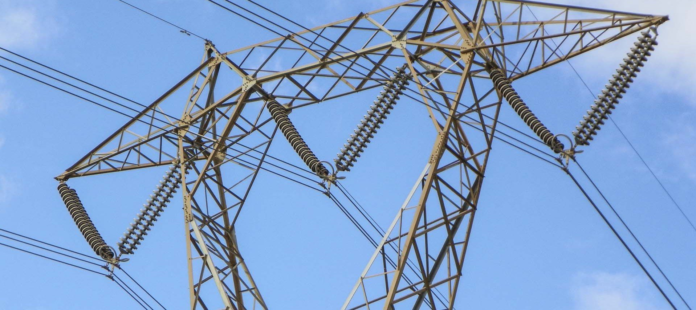Introduction
In the realm of electrical engineering and power distribution, voltage plays a pivotal role in determining the efficiency and effectiveness of a system. Two common voltage levels employed in power transmission are 11kV (kilovolts) and 33kV. This blog post aims to unravel the intricacies of the “difference between 11kV and 33kV,” shedding light on their distinct characteristics, applications, and implications.
The Basics: What is Voltage?
Before delving into the disparities between 11kV and 33kV, it’s imperative to grasp the fundamental concept of voltage. Voltage, measured in volts (V), represents the electric potential difference between two points in an electrical circuit. It serves as a critical parameter in determining the power transmission capabilities of a system.
11kV: Unveiling the Specifics
Definition and Application
11kV refers to an electrical system operating at 11,000 volts. This voltage level is commonly employed in medium voltage power distribution networks. It strikes a balance between efficient power transmission and manageable insulation requirements, making it suitable for urban and suburban areas.
Key Characteristics
1. Voltage Level:
Operates at 11,000 volts, representing a medium voltage range in the electrical power distribution spectrum.
2. Distribution Networks:
Predominantly used in local distribution networks, supplying electricity to residential, commercial, and industrial areas.
3. Transformer Stations:
Transformer stations are crucial components in 11kV systems, transforming higher voltages down to 11kV for localized distribution.
4. Application Scope:
Well-suited for urban and suburban areas where a balance between efficient power transmission and manageable insulation requirements is essential.
5. Insulation Requirements:
Requires relatively less complex insulation compared to higher voltage levels, contributing to cost-effectiveness in infrastructure development.
6. Network Flexibility:
Provides flexibility in designing distribution networks for areas with varying power consumption needs due to its medium voltage level.
7. Cost-Effectiveness:
Offers cost-effective solutions for power distribution in areas with moderate power demand, striking a balance between efficiency and affordability.
8. Equipment Compatibility:
Electrical equipment designed for 11kV systems is readily available and cost-effective, contributing to the overall affordability of the infrastructure.
9. Urban Development:
Facilitates the electrification of urban and suburban regions, supporting the growth and development of residential and industrial areas.
10. Reliability:
Demonstrates reliable performance in delivering electricity to end-users in areas with moderate power requirements.
11. Environmental Impact:
Generally has a lower environmental impact compared to higher voltage systems, making it a more sustainable option for localized power distribution.
12. Safety Considerations:
The lower voltage level of 11kV systems contributes to enhanced safety, minimizing the risks associated with electrical accidents and equipment failures.
33kV: A Deeper Dive
Definition and Application
33kV, on the other hand, represents a higher voltage level at 33,000 volts. This voltage range finds extensive use in both primary and secondary power distribution systems, delivering electricity over longer distances with reduced power losses.
Key Characteristics
1. Voltage Level:
- 33,000 Volts: The primary characteristic of a 33kv cables is its operating voltage level of 33,000 volts. This higher voltage level distinguishes it from lower voltage systems and is a key factor in its specific applications.
2. Applications:
- Long-Distance Transmission: One of the primary applications of 33kV systems is in long-distance power transmission. The higher voltage allows for the efficient transport of electricity over extended distances, reducing power losses during the journey.
- Industrial Usage: 33kV is commonly employed in industrial settings where substantial electrical power is required. Industries with high power demands, such as manufacturing plants and large-scale facilities, benefit from the capabilities of a 33kV system.
3. Power Losses:
- Reduced Transmission Losses: Compared to lower voltage systems, a 33kV system experiences reduced power losses during transmission. This efficiency is particularly advantageous for electricity transport across extensive networks.
4. Insulation Requirements:
- Higher Insulation Standards: Due to the elevated voltage level, 33kV systems necessitate higher insulation standards. The insulation materials and techniques employed must effectively withstand the increased electrical stress associated with this voltage, contributing to the overall reliability of the system.
5. Equipment and Infrastructure:
- Specialized Equipment: 33kV systems require specialized equipment, including transformers, circuit breakers, and switchgear, designed to handle the higher voltage levels. This specialized infrastructure contributes to the overall efficiency and safety of the system.
6. Safety Considerations:
- Stringent Safety Measures: Operating at 33kV requires stringent safety measures. Personnel working on or around 33kV systems must adhere to strict protocols to prevent accidents and ensure the well-being of individuals and the integrity of the electrical infrastructure.
7. Cost Implications:
- Increased Infrastructure Costs: The need for specialized equipment and higher insulation standards contributes to increased infrastructure costs associated with 33kV systems. However, these costs are often justified by the efficiency and reliability benefits offered by the higher voltage level.
8. Grid Interconnection:
- Grid Integration: 33kV systems play a crucial role in the interconnection of power grids. They facilitate the transfer of electricity between different regions, ensuring a stable and reliable power supply on a broader scale.
9. Regulatory Compliance:
- Compliance with Standards: 33kV systems must adhere to established electrical standards and regulations to ensure compatibility with the overall power grid and to meet safety requirements set by regulatory authorities.
The Crucial Differences
Now, let’s systematically outline the differences between 11kV and 33kV:
1. Voltage Level
- 11kV: Operates at 11,000 volts.
- 33kV: Operates at 33,000 volts.
2. Applications
- 11kV: Primarily used in local distribution networks for residential, commercial, and industrial areas.
- 33kV: Employed in both primary and secondary distribution systems, suitable for long-distance power transmission and industrial applications.
3. Power Losses
- 11kV: Generally experiences higher power losses compared to 33kV over longer distances.
- 33kV: Offers reduced power losses, making it more efficient for long-distance transmission.
4. Insulation Requirements
- 11kV: Requires less complex insulation systems, contributing to cost-effectiveness.
- 33kV: Demands higher insulation standards, leading to increased infrastructure costs.
Conclusion
In conclusion, the “difference between 11kV and 33kV” lies not only in their numerical variance but also in their distinct applications and implications. While 11kV is suitable for localized distribution networks, 33kV shines in long-distance transmission and heavy industrial applications. Understanding these differences is crucial for designing efficient and cost-effective power distribution systems tailored to specific needs.
















